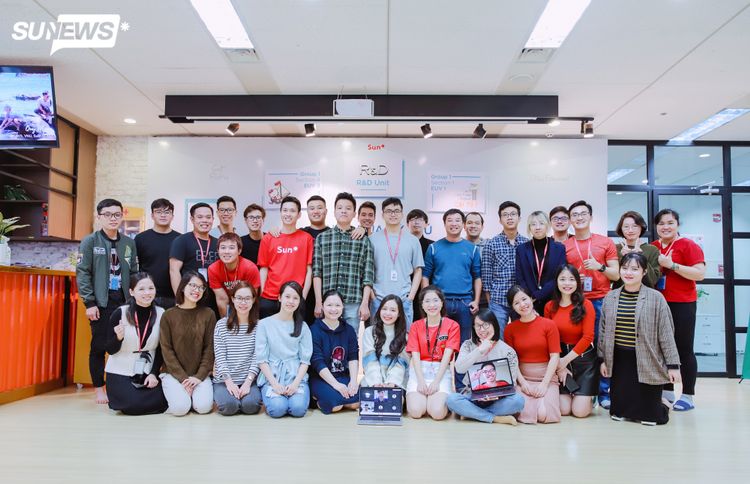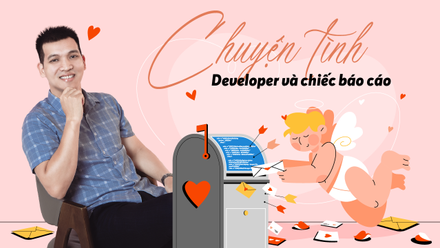Reveal 6 pro-tips for “triumph in every battle” of the million-dollar project at Sun*
If you apply these 6 ultimate tips, your project will definitely go off without a hitch.
As introduced in the article about the Seminar “ Million-dollar project management - The scientific principles” on the last November 23, the representative of a million-dollar project at Sun* held a seminar to share pro-tips that any project desiring for success should know.

With the participation of many members from BrSE, Comtor, QA, Front-End and Developer - indispensable components of a project, the seminar "Million Dollar Project Management - Scientific Principles" was a great success, offering the audience a lot of useful information that could be applied to the project they were running.
Are we following the principles?
Before revealing the tips that make Project X the million-dollar project at Sun with a round of applause from customers. PM Duy Son mentioned the word “principle” frequently as well as proposed question of “What is the principle?” and “What principles are your projects following?” to the participants.
Principles are the initial and important ideas or theory that is considered to be the starting point for constructing other theories, such as the fundamental arguments of a theory or basic law with generalized characteristic, governing a series of phenomena.
It is true that every day, we all live and work on different principles, many of which we do not even realize. If we live by a certain principle, obviously the decisions we make are based on that principle.
Project management and operation are similar. For example, at Sun*, not only one but many projects are currently applying 12 Agile principles in their operation.
Going back to the main content of this sharing, while the project scale is up to 50 members with so many sub-projects, even though there is not much experience in operating and managing such a huge project, what principles have PM Duy Son applied to drive the project to success?
6 pro-tips for “triumph in every battle”
Mr. Duy Son has pointed out 6 basic principles of management for large projects that he has been applying for the million-dollar project under his management. Mr Son relied on a clear scientific basis of each principle, sharing the situation of the project as well as proposing difficulties and outcomes of the application of each principle.
Principle 1: Know thy enemy - Know thyself
Have you ever flattered yourself? According to an American study, humans have the tendency to think of themselves as being better than others and judge others to be at the same or below their ability and beauty.
This is the basis for the first principle: Know thy enemy - Know thyself. When you flatter yourself and assume that you have known everything about your ability is exactly when you have inadvertently fallen into your own “quick knowledge” trap. At that time, your project will deviate from the initial direction and the consequence will be significant!
By applying the principle “Know thy enemy - Know thyself”, not only the projects are able to build trust and satisfaction from customers but the Leaders can be more proactive in tasks such as making deals or requests to the customers.
This principle is applied when we start to learn about the project.
Principle 2: Free bird wings
Truth dictates that each of us aspire for freedom. That ís the scientific basis for principle 2: “Free bird wings”
This principle means that the Leaders will proactively make operational decisions in the team they lead, proactively plan team activities. Besides, PM plays the role of suggesting and consulting instead of directly intervening. With this principle, each and every member will gradually be empowered and become an important factor in the project.
This principle is applied when we assign tasks to our members.
Principle 3: Perfection starts from imperfection
As its name suggests, this principle focuses on the imperfection of humans. Instead of putting too much expectation and high pressure from scratch, Mr. Son has applied this principle so that each member can be more comfortable with failure, regarding failure as the precedent of success.
The project’s candid perspective towards the problem and gradual solution has enhanced the team’s professionalism day by day. Although sometimes the project had to suffer substantial pressure and stress or numerous incidents at the same time, every member in the project gradually realized the positivity of the application of this principle and had more motivation to perfect themselves.
This principle is applied when we start to design tasks.
Principle 4: The lazy ant effect
The decision on what should not be done is just as important as the decision on what should be done. Regarding the tasks that you can do as well as others, let them do it for you.
You may feel frustrated, anxious, or even dissatisfied when you can’t get involved in those jobs, but you cannot deny the fact that they are doing better at the job than you. This principle does not motivate you to be lazy and not do anything at all. Instead, the manager will not become a stone hindering the project and the member may have newer, broader perspectives as well as more time to think about the strategies for the project.
This principle applies when we assess the results
Principle 5: The flywheel
Running a project is like operating a series of flywheels. In the project, if the Development Team is a large flywheel, to spin it, we will impact smaller and more flexible gears, which are the customer, the BrSE, and the TLs. Once the flywheel has accumulated enough rotational energy, the project will just run smoothly. At that time, with its strength, there are no obstacles to the project.
In addition, from the customer side, they will continue to have more options for developing new functions because they have had an elite team in their hands since now.
Therefore, this principle shows the smooth and consistent operation of the project team.
This principle applies when we orient the development of a project in the future.
Principle 6: "Only breastfeeding when the baby is crying"
This is the last principle shared by Mr. Son in the last seminar. "Crying" here means that we know to present the problem at the right time, clearly and comprehensively, with a complete database and evidence and reasons.
Easy as it may sound, not everyone knows how to "cry" properly. Specifically, when the project encounters a problem, leaders or members do not proactively raise the issue, do not provide clear figures, and begin to blame their leader for disregard.
But once this principle is applied, gradually the team's "crying" skill is improved. Team members “cry” more enthusiastically and the team will receive more benefits when applying this principle to the project operation.
This principle is applied when the problem occurs.
In just 1 hour of organization, the seminar ended and offered a lot of useful information, so that project managers or members will know how to manage, coordinate and operate the project in the smoothest and most effective way.
Hopefully, after the seminar, each Sunner can "pocket" for themselves the tips to complete the job well as well as contribute to the success of the project.

 VI
VI EN
EN



